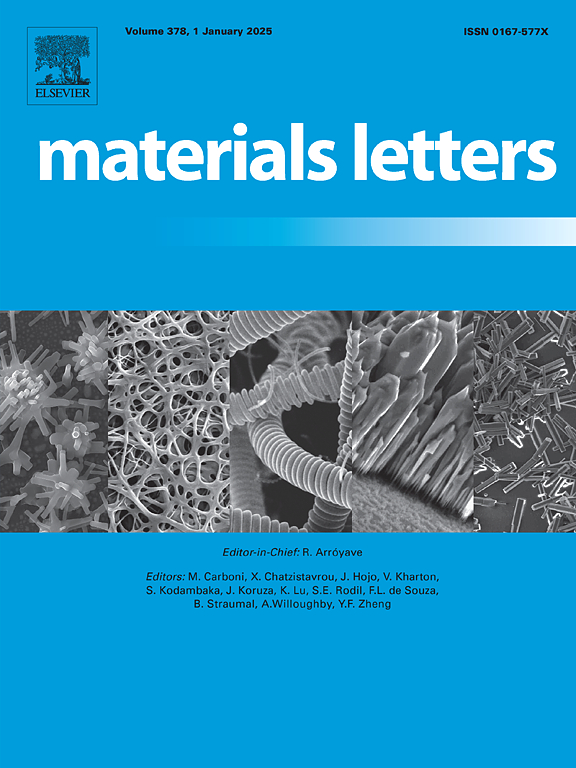Laser powder bed fusion of mixed aluminum powders: Microstructure features and mechanical properties
IF 2.7
4区 材料科学
Q3 MATERIALS SCIENCE, MULTIDISCIPLINARY
引用次数: 0
Abstract
The aluminum alloy was synthesized by the LBBF method from a mixture of different secondary aluminum powders containing Mg, Zn, Fe, Ce, Si, Co and Ni alloying elements with their total amount of about 6 wt%. The annealing treatment of the alloy at 200 °C relieved high internal stress, which allowed to achieve an excellent combination of strength and plasticity. Depending on the scanning speed, the tensile strength and relative elongation varied from 266 to 324 MPa and from 16 to 19 %, respectively. Such properties were the result of the ultra-fine cellular microstructure formation, with the cell boundaries formed by chains of nanosized aluminide particles. Detailed studies of the heterogeneity of the microstructure and its morphology were carried out. High thermal stability of the synthesized material was established.
求助全文
约1分钟内获得全文
求助全文
来源期刊

Materials Letters
工程技术-材料科学:综合
CiteScore
5.60
自引率
3.30%
发文量
1948
审稿时长
50 days
期刊介绍:
Materials Letters has an open access mirror journal Materials Letters: X, sharing the same aims and scope, editorial team, submission system and rigorous peer review.
Materials Letters is dedicated to publishing novel, cutting edge reports of broad interest to the materials community. The journal provides a forum for materials scientists and engineers, physicists, and chemists to rapidly communicate on the most important topics in the field of materials.
Contributions include, but are not limited to, a variety of topics such as:
• Materials - Metals and alloys, amorphous solids, ceramics, composites, polymers, semiconductors
• Applications - Structural, opto-electronic, magnetic, medical, MEMS, sensors, smart
• Characterization - Analytical, microscopy, scanning probes, nanoscopic, optical, electrical, magnetic, acoustic, spectroscopic, diffraction
• Novel Materials - Micro and nanostructures (nanowires, nanotubes, nanoparticles), nanocomposites, thin films, superlattices, quantum dots.
• Processing - Crystal growth, thin film processing, sol-gel processing, mechanical processing, assembly, nanocrystalline processing.
• Properties - Mechanical, magnetic, optical, electrical, ferroelectric, thermal, interfacial, transport, thermodynamic
• Synthesis - Quenching, solid state, solidification, solution synthesis, vapor deposition, high pressure, explosive
 求助内容:
求助内容: 应助结果提醒方式:
应助结果提醒方式:


